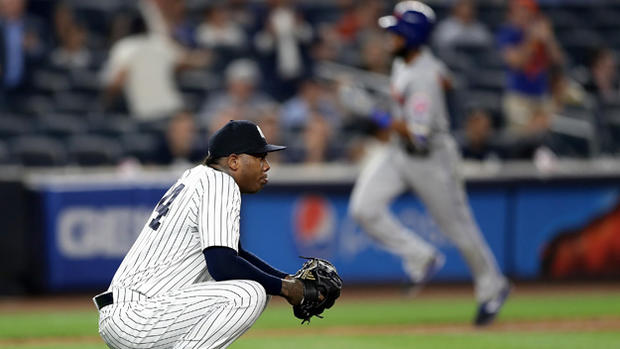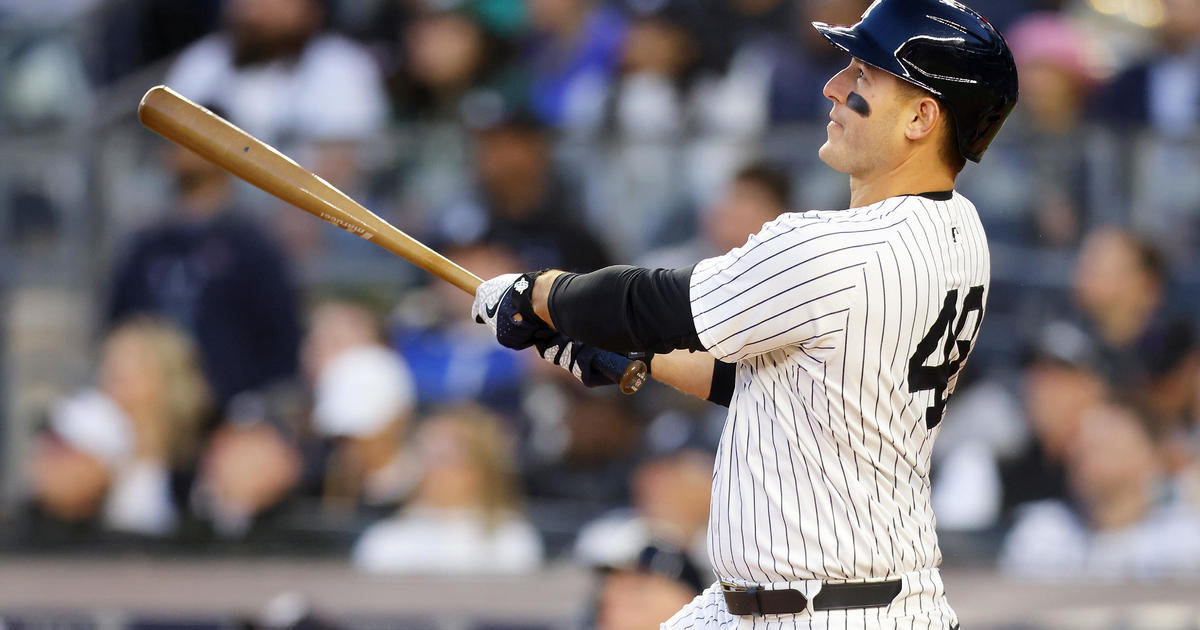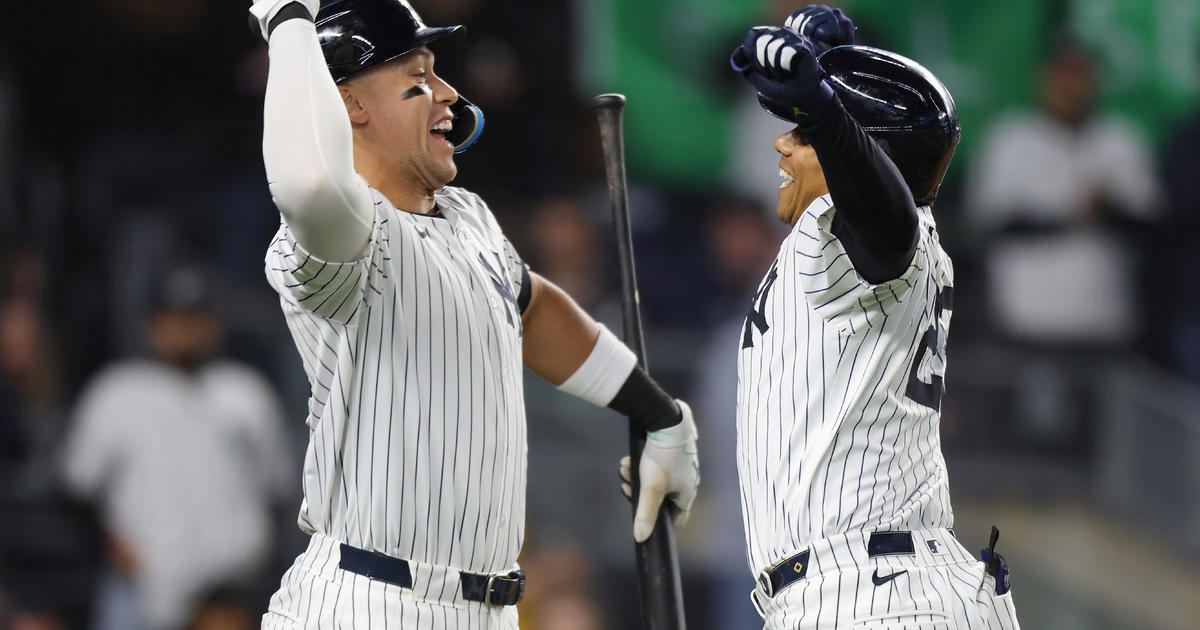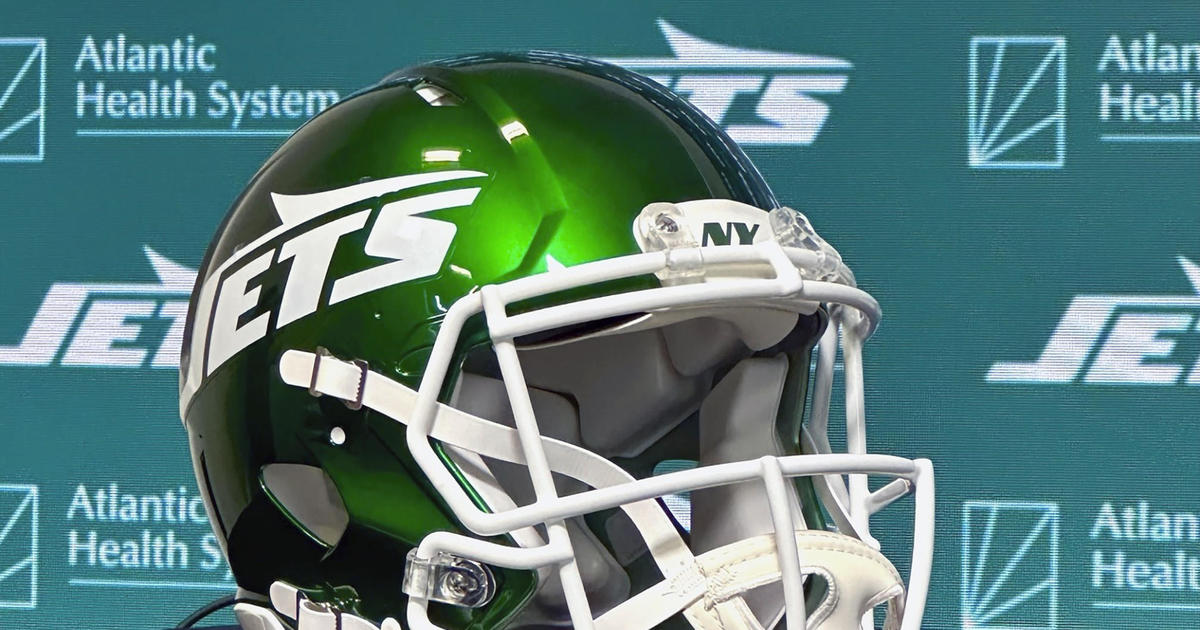Palladino: Chapman's Struggles Prove Velocity Is Only Part Of The Game
By Ernie Palladino
» More Ernie Palladino Columns
Whether he intended to or not, Aroldis Chapman has taught all of baseball a lesson: Velocity means nothing without movement and location.
So for all those general managers stuck on getting starters and relievers who can break the radar gun, take note. The Yankees closer's problems before a slight hamstring injury sidelined him the past couple of games didn't happen because of a decrease in speed. After all, Rafael Devers, a rookie by the way, ruined Chapman's save opportunity Sunday with a homer off a 102.8 mph fastball.
That's right. A rookie, albeit a gifted one, slammed the hardest thrower in baseball for a tying homer in the ninth off the fastest pitch to go out since the league made velocity stats official in 2008.
Chapman eventually lost that game in the 10th, of course. And then Mets rookie Amed Rosario caught hold of a hard slider two days later to put the closer on a fast-fraying tightrope.
Chapman made it to the other side, of course, but he strained his hamstring in the process. But the homers emphasized a point that has become painfully apparent over the four blown saves in his rocky season. If even rookies can get around on his supersonic stuff, then any decent hitter can. So velocity isn't all GMs, managers, and even pitchers themselves think it is.
MORE: LISTEN: Francesa Rips Chapman, Says Yankees Should 'Go With The Hot Hand' At Closer
Noah Syndergaard learned that lesson the hard way. After putting on 15 pounds of muscle in the offseason so he, too, could break baseball's Mach 1, he wound up throwing himself right onto the Mets' long-term disabled list.
He's still not back, having yet to start a minor league rehab assignment. But when he does return from that torn lat, he's going to alter his pitching style.
No more trying to muscle every pitch into triple digits, he said. He'll still keep the supersonic stuff in his pocket for when he needs it. Right time, right situation. But he'll conduct most of his future business in the 95-to-98 mph range.
Syndergaard no doubt concluded on his own that adding muscle and velocity were mistakes. Chapman's problems had nothing to do with that. But other hard throwers should go to school on Chapman and put this silly fascination with speed numbers aside.
It's more important to get outs. And one doesn't have to dazzle at 100 to do that.
Dwight Gooden didn't. During his heyday with the Mets, his fastball came through the zone in the mid-90s, tops. Hitting it was almost impossible, not because of blinding speed, but because it started at the letters and wound up at the eyeballs.
Following that with a curve so majestically sweeping that journalists and players nicknamed it "Lord Charles" made for an unbeatable -- and un-hittable -- combination.
Hall of Famer Greg Maddux never came close to 100 and barely hit 90 with his heat. But he still finished consistently in the top 20 in strikeouts thanks to a fantastic changeup and his command of the perimeter of the strike zone.
Chapman's own Yankees ancestor, Mariano Rivera, made his living by locating a cutter that never touched 100. The pile of useless firewood rose higher than Trump's high-rises by the time he was finished.
It's called pitching, something that seems to have fallen far down the priorities list in an era where the speed gun rules all.
For all of Chapman's ability to throw hard, it hasn't kept the Red Sox from hanging an 8.44 ERA on him in six meetings. It hasn't kept him from blowing four saves in 20 save opportunities. It hasn't stopped opponents from slapping him with 30 hits and 15 earned runs in 34 2/3 innings.
It just shows that speed isn't everything. Perhaps Chapman needs to concentrate more on pitching than throwing. He has what the scouts call "electric stuff," but the preoccupation with speed has ruined his efficiency.
MORE: As Chapman Struggles, Is It Time For Yankees To Make Change At Closer?
The heat is on Chapman to straighten himself out in time to become a functional part of a division drive. Until then, Dave Robertson -- more pitcher than thrower -- will get the ninth-inning phone call. And he'll probably continue to do a good job, just as he did when he saved 39 games as Rivera's successor in 2014.
That is the Yankees' situation.
The rest of baseball can take a lesson from Chapman. Glittering speed is one thing. Getting guys out is quite another.
Being a complete pitcher helps the ultimate goal of winning games a lot more than topping 100 mph.
Maybe that's what GMs and managers should be looking for these days.
Follow Ernie on Twitter at @ErniePalladino




